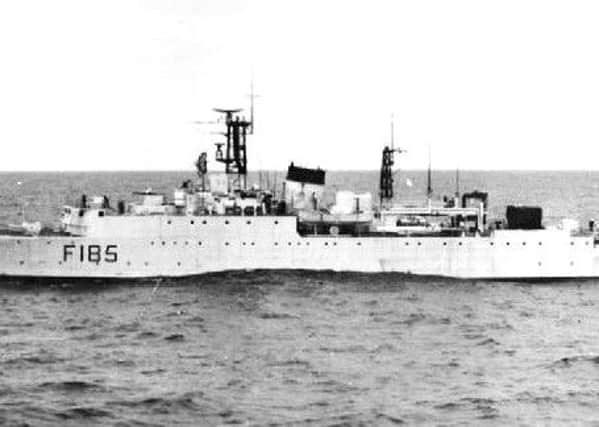Post-war courtesy visit of HMS Relentless to Sunderland in 1954


This week, we look back to the 1954 visit of HMS Relentless to Sunderland’s Corporation Quay.
Originally constructed as an R-class destroyer (pennant number H85), she was launched by John Brown and Co on Clydebank in 1942.
Advertisement
Hide AdAdvertisement
Hide AdCommissioned on November 30, that year, the ship was engaged in anti-submarine and escort duties in the Indian Ocean and South Atlantic.
During the war, she earned the Battle Honour Sabang 1944, which involved bombardment of Japanese targets at Sumatra.
After entering the Reserve Fleet in 1947, she underwent conversion to a Type 15 anti-submarine frigate (pennant number F185) at Portsmouth Royal Dockyard between 1949 and 1951.
Assisted by the France, Fenwick Tyne and Wear Co Ltd steam tugs, Fulwell, Souter and Roker, the 358-foot-long frigate berthed at Corporation Quay on the afternoon of June 1, 1954.
Advertisement
Hide AdAdvertisement
Hide AdThen based at Londonderry, Northern Ireland, the warship sported the “Red Hand of Ulster” badge of the Third Training Squadron on her funnel.
Displayed in the cabin of Commanding Officer George Osborn Symonds, DSC was an unusual plaque depicting a German submarine and a rising sun on top of the world.
This was taken from the first German U-boat (U-249) to surrender at the war’s end.
As was usual on such occasions, hospitality was a two-way affair, with the Navy hosting on board entertainment for the local community, while Sunderland Corporation arranged functions and activities for the officers and men.
Advertisement
Hide AdAdvertisement
Hide Ad100 youngsters from Moorhill Orphanage and the Cottage Homes were treated to a party on board, while events arranged for the crew included a visit to Vaux Brewery, a bus excursion to Weardale and Teesdale, a tour of Sunderland Echo’s printing press and watching a cricket match.
A civic ball was also held at Seaburn Hall, with a “Meet the Navy” dance taking place at the New Rink.
An interesting feature of the warship was that her bridge was incorporated into and placed at front of the upper deck superstructure.
In the event of action, her commander could guide operations by means of a periscope worked from the control room.
Advertisement
Hide AdAdvertisement
Hide AdRelentless was open to the public on June 2 but cameras were banned, perhaps due to sensitive counter-atomic radiation measures adopted during conversion to withstand atomic attack.
Before the ship left the Wear for Amsterdam on June 3, many sailors could be heard singing “Wonderful, wonderful Sunderland” to the tune of Wonderful Copenhagen from the 1952 film Hans Christian Andersen.
HMS Relentless was eventually placed on the disposal list and was scrapped by Thomas W Ward Ltd shipbreakers at Inverkeithing in 1971.